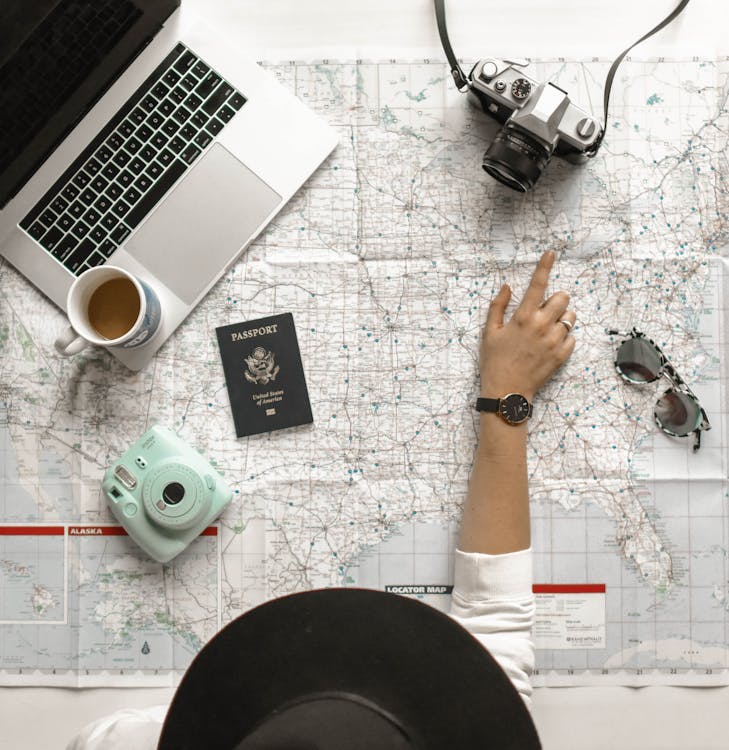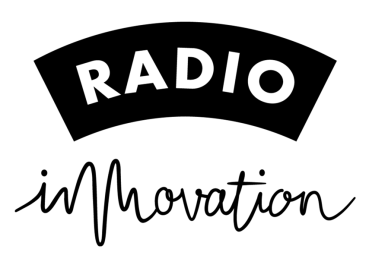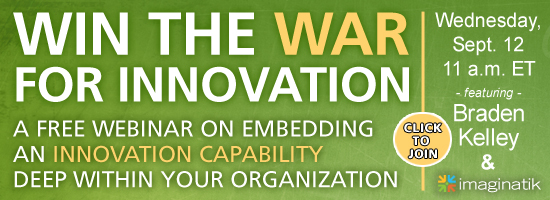
GUEST POST from Arlen Meyers
Chief Innovation Officers are growing like weeds. Some think their job is to manage innovation.
Some even go so far as to define their desirable traits.
Here is yet another article on how to manage innovation.
Here are some ideas on what it takes to be an innovation manager.
You can tell the CHINOs (Chief Healthcare Innovation Officer) in your office by the chinos and polo shirts they wear. But, just because they wear the same uniforms doesn’t mean they think and work the same. You see, there is no CHINO school.
They might as well quit since managing innovation will take them in the wrong direction. Instead, they should be leading innovators. Here’s why:
1. Everyone seems to have a different definition of innovation. Be sure you are leading people who have the same understanding and objectives.
2. Managing innovation implies that the core competence of an innovative enterprise is their system or culture. While that is important, successful innovation comes from living, breathing humans who innovate or try to repeatedly despite big obstacles.
3. Managing is about optimizing the efficacy and efficiency or resources. Entrepreneurs or intrapreneurs, some of whom are innovators, pursue opportunity with limited resources with the goal of creating user defined value through the deployment of innovation.
4. Leaderpreneurs are different than managers and have a different role. They provide vision, direction and inspiration. Unfortunately, most “leaders” provide motivation, not inspiration. Here are the differences:
- External vs. Internal: The first key difference is while motivation is typically accomplished through external factors, inspiration is an internal force. Wayne Dyer puts it this way: “If motivation is when you get hold of an idea and carry it through to its conclusion, inspiration is the reverse. An idea gets hold of you and carries you where you are intended to go.”
- Duration and Effectiveness: Since inspiration is an internal force, it lasts longer and is more effective. Motivation, particularly when connected to a system of external rewards, is only effective as long as you are able to keep the system of rewards consistent. Inspiration has deeper roots; its influence sticks with you and propels you further than mere motivation can.
- People’s Responses: People respond to inspirational leadership exponentially better than they do to compensation or coercion. People are always more eager to do something when it is an idea they feel connected to and invested in. While external forces can be a key motivator, people will react far better to a personal investment.
The goal is to release the innerpreneur, not use carrots and sticks.
5. Managing is about preserving or building the status quo. Innovating is about making the status quo obsolete.
6. Managers rarely assume the roles of intrapreneurial sponsors. Leaderpreneurs have to to be successful.
7. Managers get in the way by controlling. Leaderpreneurs get out of the way by inspiring.
8. Leaderpreneurs create innovation management systems that can be scaled with the goal of making themselves obsolete as quickly as possible. Managers create systems to protect their jobs.
9. Leaderpreneurs organize chaos and serendipity. Managers strive to standardize.
10. Managers think short term costs. Innovation leaderpreneurs measure things as longer term investments.
A recently released Conference Board report showed a strong link between leadership and innovation. The authors identified nine behaviors that are key to getting results:
- Leaders jointly created a vision with their colleagues.Some have thought leadership to be about coming up with a grand strategy, and then enticing the troops to follow you up the hill. But our data showed leaders creating a vision collaboratively, not in a directive manner.
- They build trust. We interviewed leaders who were in the top 1% of their organization on creativity. One quality stood out. These leaders trusted their people and in turn their colleagues had an enormous trust in them. One person noted, “To take a risk demands that you feel really safe.” “She always has our back,” said another.
- Innovation champions were characterized by a willingness to constantly challenge the status quo.People described innovative leaders as fearless and doing what’s right versus what may be politically correct. Some highly effective leaders of innovation were characterized as being “inverse to the environment.”
- Leaders who fostered innovation were noted for their deep expertise.Colleagues noted that it was this “T” quality that defined these leaders. These leaders had a wide range of intellectual curiosity on a horizontal axis, while at the same time were grounded deeply in their knowledge of the technology at the center of what their group did.
- They set high goals. Leaders who created innovative teams were noted for setting the bar extremely high, and giving their colleagues the challenge and opportunity to achieve what they believed would be beyond their reach.
- Innovative leaders gravitate toward speed. These leaders move at a quick pace. They believe things can be accomplished sooner, not later. They gravitate toward the quick prototype that is put together with duct tape and paper clips in one day over a more perfect result they could create in six months. The graph below shows 360 results for 57,113 leaders who were rated on their speed of execution and their ability to innovate. Note that leaders who move slowly are on average rated at the 12th percentile on their ability to innovate while those who are in the top 10 percent are at the 89th percentile.
- They crave information. Innovative leaders keep the team on the same page by flooding them with relevant facts. They excel at asking good question and then being exceedingly good listeners. The combination of “catch and pitch” helps the team to excel at innovation.
- They excel at teamwork. The next characteristic of the most innovative leaders was excelling at teamwork and collaboration. It was never about “me.” It was always about the team creating something of value.
- They value diversity and inclusion. The most innovative leaders recognize that the creative process feeds on bringing people together who possess sharply differing views and experience. It is the blending of these elements that creates highly innovative solutions.
Here are five strengths of innovative leaders.
Here are some other thoughts on what it takes to lead innovators.
In general, successful innovators primarily focus on four areas: creating a vision, building an organization that can achieve that vision, leading and empowering their team to succeed in that, as well as ultimately adapting their approach based on what they’ve learned along the way.
Here are 10 tips on how to create a lead successful innovation teams.
One author noted that “the first step in creating meaningful, long-term, sustainable innovation in any organization is to recognize that cultures cause outcomes. And if this is true, bad cultures will cause bad outcomes. And if this is true, it further follows that bad leadership causes bad cultures, which in turn cause bad outcomes.”
Harvard Business School Professor Gary Pisano reminds us , though, that the innovation culture must balance easy to like behaviors with some that are less fun and designed to address the main dysfunctions of teams: an intolerance for incompetence, rigorous discipline, brutal candor, a high level of individual accountability and strong leadership.
There are many myths about organizational innovation cultures and how to create them. The truth is that cultures are the result of innovation strategy, structure, processes and people, not the cause. They are created by organizational leaders.
Innovation is not a nebulous concept tucked some where in a strategic plan. Like any combat team, it has a face, a heart and a soul and needs to nurtured and led, not managed. In the end, it’s the people, stupid.
Image credit: Pexels
![]() Sign up here to get Human-Centered Change & Innovation Weekly delivered to your inbox every week.
Sign up here to get Human-Centered Change & Innovation Weekly delivered to your inbox every week.








 If your organization is struggling to sustain its innovation efforts, then I hope you will do the following things.
If your organization is struggling to sustain its innovation efforts, then I hope you will do the following things.
 Most companies fail at innovation because they fail at change.
Most companies fail at innovation because they fail at change.
